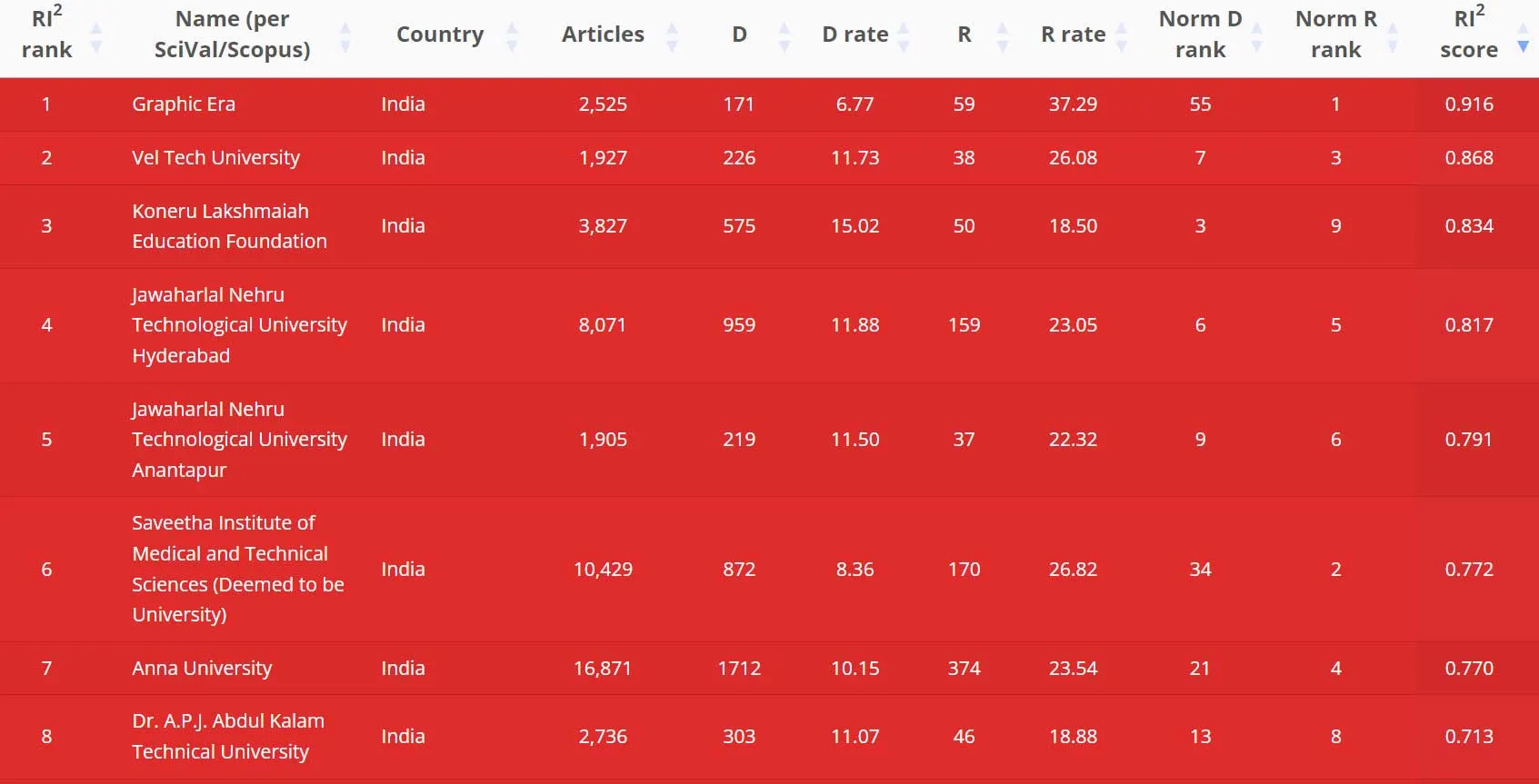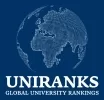Imagine a global scoreboard, not ranking universities by how many papers they publish, but by how trustworthy their research really is. In an era when reputations can be built or broken by a single scandal, knowing which institutions protect academic integrity and which cut corners is invaluable. This is exactly what the Research Integrity Risk Index (RI²) sets out to measure.
In simple terms, research integrity means conducting, reporting, and publishing scientific work honestly, transparently, and responsibly. It ensures results can be trusted, decisions can be based on sound evidence, and future research builds on a reliable foundation. Without it, even the most prestigious journals or institutions can mislead policymakers, industries, and the public. As Dr. Margaret Hamburg, former Commissioner of the U.S. Food and Drug Administration, once said:
"Integrity in science is not optional. It is essential to our ability to solve problems, advance knowledge, and earn the public's trust."
Understanding Research Integrity and Why It Matters
The term “academic integrity” often brings to mind plagiarism checks or exam conduct rules. But in research, integrity has even higher stakes. It is about safeguarding the truth in knowledge production. The principles, honesty, accountability, transparency, and rigor, are not abstract ideals, they influence real-world outcomes.
Consider medical research, if a study on a new cancer drug is retracted because of falsified data, doctors might abandon a potentially life-saving treatment, or worse, continue using a harmful one. Similarly, in climate science, publishing in unreliable journals could misinform policies that affect millions.
That is why academic integrity in research matters, it is not just an internal academic concern, it is a societal safeguard.
RI²: A Data-Driven Approach to Measuring Risk
Developed by Dr. Lokman I. Meho at the American University of Beirut (AUB), RI² offers a systematic way to detect potential research integrity risks before they escalate into scandals.
The methodology is simple yet powerful:
-
R Rate – The number of retracted articles per 1,000 publications (in other words, how many research papers had to be officially taken back or “deleted” because they were wrong, fake, or broke the rules). Retractions usually indicate serious issues such as data fabrication, plagiarism, or ethical breaches.
-
D Rate – The percentage of papers published in journals recently delisted from major databases like Scopus or Web of Science due to quality or ethical concerns (in other words, how many research papers were put in “bad” journals that are no longer trusted or recognized by big science libraries because those journals didn’t follow proper rules).
These two measures are combined into a composite score from 0 (best) to 1 (worst). Institutions are then categorized into five tiers:
-
Low Risk
-
Normal Variation
-
Watch List
-
High Risk
-
Red Flag
This approach directly answers a common question, “Why is academic integrity important in research?” Because without measuring it, universities might unknowingly (or knowingly) reward practices that prioritize publication numbers over quality and ethics.
Who’s Excelling, and Who’s Struggling
The RI² database reveals clear patterns across countries and institutions.
High-Risk and “Red Flag” Universities include:
-
Graphic Era University (India), Highest RI² score globally, with high retraction rates and significant use of delisted journals.
-
Other Indian institutions like Vel Tech, Anna University, Saveetha Institute, and JNTUs (Hyderabad & Anantapur).
-
Daffodil International University (Bangladesh).
-
Bina Nusantara University (Indonesia).
-
Several universities in Saudi Arabia, including Taif University and Majmaah University.
-
Universities in Jordan, Pakistan, Iraq, and China also appear on watch lists.
These results confirm that research integrity risk is not limited to one country or region, it is a global issue, often tied to academic pressures such as rapid publication targets and ranking-driven incentives.
Low-Risk Examples are less often publicized but equally important:
-
New York University Abu Dhabi (UAE) is cited as a low-risk institution with careful publication oversight.
-
Many universities in Western Europe, Japan, and parts of North America are absent from high-risk lists, suggesting better governance and stricter publication vetting.

The Real-Life Impact of Poor Research Integrity
To understand how RI² connects to real life, let’s examine some documented consequences of research misconduct:
-
Medical Field: In 2020, The Lancet retracted a high-profile COVID-19 treatment study after discovering fabricated data. The fallout caused confusion among healthcare providers and slowed clinical trials.
-
Engineering and Infrastructure: Retractions in structural engineering studies have led to delays and cost overruns in projects when faulty research was embedded into planning.
-
Agricultural Policy: Poor-quality studies published in predatory journals have influenced agricultural subsidies in some countries, leading to misallocated resources and economic losses.
In all these cases, if RI²-style monitoring had been in place at institutional or national levels, red flags could have been spotted earlier.
Why AUB’s RI² Report Is Authentic and Reliable
Skeptics may ask, “Who is most responsible for academic integrity in a university, the individual researcher or the institution?” The truth is both, but institutional oversight is critical. That is where RI² shines.
1. Expert Leadership
Dr. Lokman I. Meho is not just a librarian, he is one of the most cited bibliometric researchers in the Arab world, with deep expertise in research evaluation and scholarly publishing. His credentials add credibility to RI²’s design.
2. Transparent Methodology
All data is drawn from publicly verifiable sources, Scopus, Web of Science, and documented retraction databases. This means anyone can replicate the process to verify results.
3. Constructive Intent
RI² is not about “naming and shaming.” As Meho explains in multiple interviews, the goal is to help universities identify weaknesses early and improve.
4. Global Recognition
RI² has been covered by Nature, University World News, and regional media, signaling recognition from both global and regional academic communities.
Integrating the Core Principles of Research Integrity
The five commonly cited principles, honesty, transparency, accountability, rigor, and respect, are all indirectly measured by RI²’s two indicators (R Rate and D Rate). For example:
-
A low R Rate suggests honesty and rigor in research methods.
-
A low D Rate suggests accountability in journal selection and respect for disciplinary standards.
In other words, RI² provides a numeric reflection of how well a university is living up to these pillars.
How Universities Can Use RI² to Improve
For institutions wondering how to act on RI² data, the steps are clear:
-
Audit Recent Publications – Identify papers in delisted journals or those with questionable peer review.
-
Strengthen Research Training – Educate faculty and students on journal quality, ethical publishing, and data transparency.
-
Revise Incentive Systems – Shift away from rewarding sheer publication numbers toward rewarding impact, reproducibility, and ethical standards.
-
Establish Integrity Committees – Ensure oversight at department and faculty levels.
By doing so, universities not only improve their RI² score but also protect their global reputation.
Looking Ahead: RI² as a Ranking Supplement
While RI² is not a traditional ranking, it could become an essential complement to university ranking systems like UNIRANKS. Rankings often focus on reputation, research volume, or citations, but without an integrity measure, they risk celebrating quantity over quality.
In fact, many in the academic community now argue that research integrity metrics should carry equal weight to research impact metrics in evaluating institutional excellence.
It is worth noting that UNIRANKS and Webometrics are more accurate in reflecting true university performance compared to some other ranking systems. This is because other rankings sometimes place universities with poor research integrity, as flagged by RI², among their top positions. For example, Graphic Era University in India, identified by RI² as having the highest risk score, appears prominently in the Times Higher Education Impact Rankings and the QS Asia University Rankings despite its integrity concerns. This discrepancy shows why incorporating RI²-like indicators, as UNIRANKS and Webometrics do, leads to a more honest and reliable evaluation.
Conclusion: Integrity as the Bedrock of Trust
Research integrity is not a luxury, it is the foundation of credible scholarship. RI² offers universities, policymakers, and ranking bodies a practical way to measure and manage integrity risks before they turn into crises.
The message is clear, Institutions that uphold integrity not only protect their reputations but also ensure their research truly benefits society. Those that ignore these warning signs risk eroding trust, misinforming policy, and causing real harm.
Or, to borrow the words of Nobel laureate Sir Paul Nurse:
"Science should be built on the rock of integrity. If the rock is eroded, the whole structure collapses."
With tools like RI², that rock can be examined, strengthened, and preserved for the generations of scholars to come.








Add comment